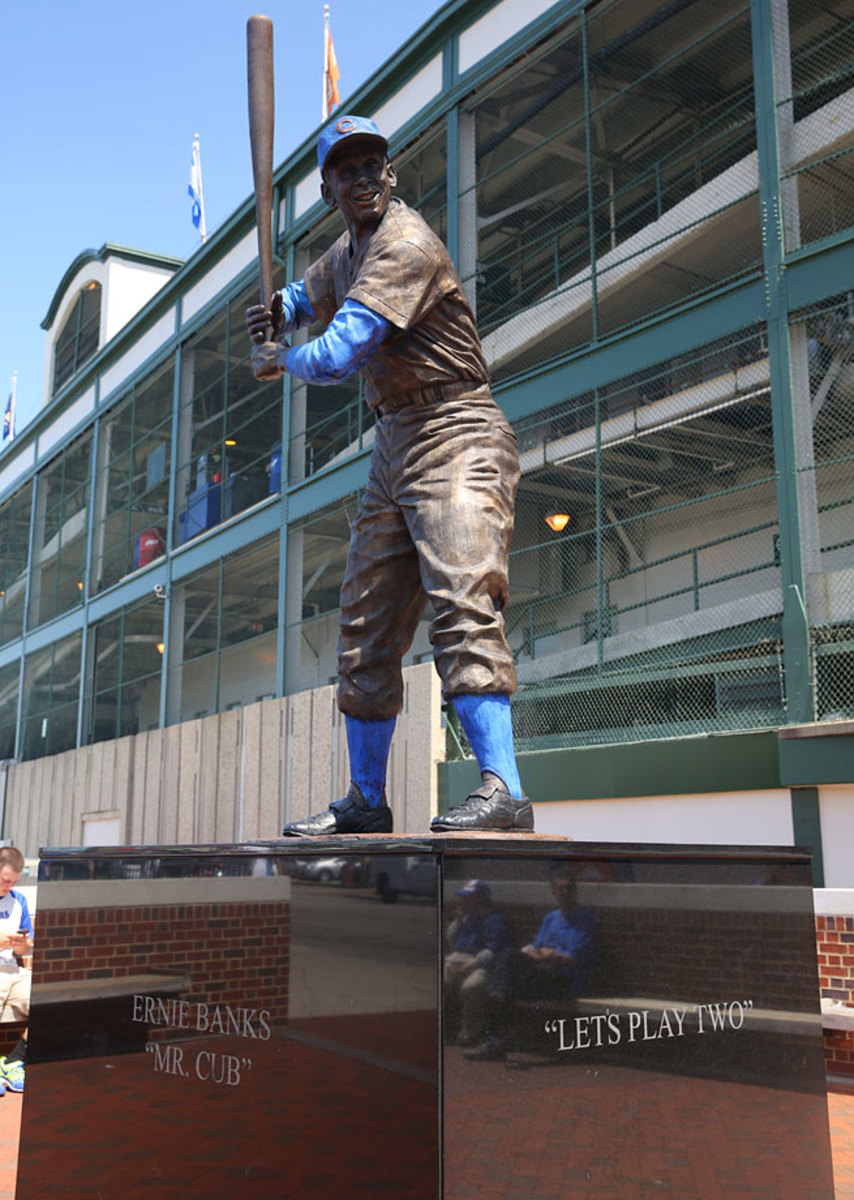Measuring where Ernie Banks ranks among the best shortstops ever
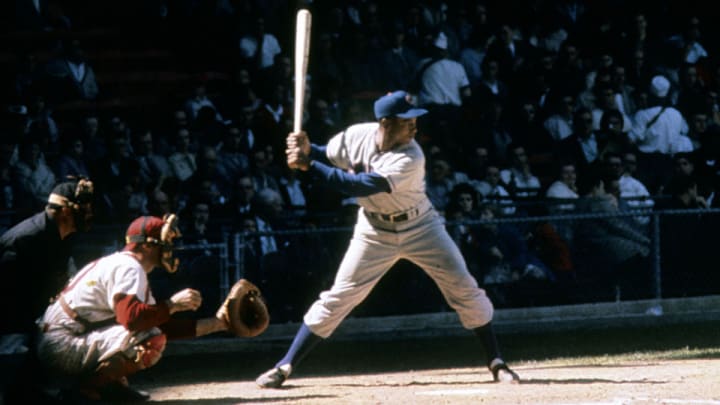
The legacy of Chicago Cubs legend Ernie Banks, who died on Friday at age 83, is about much more than his famous saying, "Let's play two," or the numbers he put up during his 19-year major league career. Even so, those statistics — particularly his 512 home runs — were quite impressive, and they help put his unique career into perspective.
When Banks came to the Cubs in late 1953 after being purchased from the Negro League's Kansas City Monarchs, Major League Baseball was in a relatively high-offense era. Teams scored 4.61 runs per game that year, the fifth time in six years they'd been above 4.5 per game after a dip during World War II, and they hit an average of 0.84 homers per game, in a virtual tie with the 1950 season as the highest rate in baseball history to that point. Scoring levels would remain in the 4.3-4.5 per game range until 1963, when they fell back below 4.0 for the first time since the war, but home run rates remained high, well above 0.8 per game, a level that hadn't been seen prior to 1950.
Chicago Cubs legend Ernie Banks dies at 83
Even amid those inflated levels, shortstop was not a high-offense position, and while power from the spot wasn't unheard of, during the year that Banks got his cup of coffee, just four regular shortstops reached double digits in home runs: Alvin Dark (23), Solly Hemus (14), Pee Wee Reese (13) and Johnny Logan (11). Once Banks reached his peak — which didn't take too long — he showed unprecedented power for the position. In 1954, his official rookie season, Banks hit 19 home runs, one fewer than Dark's total that year and a number that tied for the 15th-highest total from a regular shortstop to that point in baseball history. (Due to the incomplete play-by-play record, the splits are incomplete, so I'm using players who spent at least 50 percent of their seasons at short).
Just one year later, Banks bashed 44 homers, topping Vern Stephens' 39 for the Red Sox in 1949 as the new record for the position. Stephens owned the top three marks to that point, having also hit 29 for the Sox in 1948 and 30 for them in 1950. He had hit 24 for the St. Louis Browns in 1945, the first time any shortstop had led his league.
From 1955-60, Banks bopped 40 homers five times, leading the National League with 47 in 1958 and again with 41 in '60. Those seasons stood as the five highest single-season totals from a shortstop until the turn of the millennium and the height of the so-called “Steroid Era.” Alex Rodriguez hit 52 in 2001, his first year with the Rangers, then followed with 57 in '02 and 47 in '03, bumping Banks' personal best into a tie for third. Those two players have a complete monopoly among the top 11 single-season totals (including a 10th-place tie). Only one other shortstop has hit 40 homers in a single season: Boston's Rico Petrocelli, in 1969.
Stephens was the first player to hit 200 home runs as a shortstop — the strict split, excluding his time at other positions — doing so from 1942-53 before finishing his career as a third baseman. He totaled 213 dingers at short and 247 overall. Banks was the second player to reach that plateau; ultimately, he hit 277 of his 512 career homers as a shortstop, a record that stood until Cal Ripken Jr. surpassed it in mid-1993 — though the Elias Sports Bureau didn't realize it was a record until the following offseason. Today only Ripken (345), Rodriguez (344) and Miguel Tejada (291) have surpassed Banks' total.
#http://www.120sports.com/video/v107320826/remembering-ernie-banks
The Cubs experimented with moving Banks off of shortstop as early as 1957, when he played 58 games at third base while using light-hitting journeyman Jack Littell at short. Littell had starred in the Pacific Coast League the year before but hit just .190/.233/.261 before the experiment ended. The Cubs tried again in 1961, when Banks played 23 games in leftfield, mostly at the expense of slumping future Hall of Famer Billy Williams, and then seven games at first base. It wasn't until 1962, his age-31 season, that he left shortstop for good. Aside from 11 more games at the hot corner and an increasing number of appearances as a pinch-hitter, he would spend the rest of his career at first base, where he tallied 210 more of his home runs.
When Banks hit his 500th homer on May 12, 1970, he was just the ninth player in major league history to reach that plateau and the third infielder, following first baseman Jimmie Foxx and third baseman Eddie Mathews, the latter of whom Banks wound up tying for ninth at 512 by the time he retired in 1971. Thanks to the proliferation of the longball over the past two decades, today the pair are tied for a still-impressive 22nd. Sammy Sosa surpassed Banks as the Cubs’ all-time home run leader with 545 before departing following the 2004 season, but Banks holds the franchise marks for games (2,528), plate appearances (10,394), hits (2,583), RBIs (1,636), total bases (4,706) and extra-base hits (1,009).
Remembering Ernie Banks: Why 'Mr. Cub' was the ideal baseball hero
Using Wins Above Replacement, Banks' seven most valuable seasons all came during his time as a regular shortstop, with the aforementioned 1957 and '61 seasons where he dabbled elsewhere placing fifth and seventh, respectively. In part, that's because the positional adjustments built into WAR — which express the relative talent scarcity at the positions — quantify a full season at shortstop at about 18 runs higher than they do at first base, so a player who can adequately play the tougher position rates as considerably more valuable.
What shouldn't get lost, however, is that advanced fielding metrics suggest Banks did more than hold his own at the more difficult position. Via Baseball-Reference.com's Total Zone system, he was an estimated 62 runs above average with the glove at short, about eight above average per 154 games, the length of the season prior to expansion; here it’s worth noting that he led the league in games played six times from 1954-60, giving the Cubs full value of that excellence afield.
Quite neatly, Banks' two MVP-winning seasons rank as his two most valuable. He was worth 10.2 WAR in 1959, when he hit .304/.374/.596 with 45 homers for a 156 OPS+ and was 23 runs above average defensively; Hank Aaron's 8.6 WAR ranked as the league's second-highest total. Banks was worth 9.4 WAR in 1958, when he hit .313/.366/.614 with 47 homers and a 155 OPS+ and was 10 runs above average in the field. That season he became the first shortstop to lead the league in total bases since Rogers Hornsby in 1917, but he actually ranked second in WAR behind Willie Mays' 10.2. There was no shame in that, as Mays led the Senior Circuit in WAR nine times from 1954-65, with Duke Snider (1956), Banks and Aaron (1961) the only players to break through. Banks ranked among the league's top five five times from 1955-60, with 1956 the exception. During that time, he averaged a whopping 7.9 WAR per year, with Mickey Mantle (8.9) and Mays (8.7) outdoing him.
Where Are They Now: Catching up with Cubs legend Ernie Banks
In playing through the 1971 season, Banks wound up accumulating more games at first base (1,259) than shortstop (1,125), though as his offense and defense both declined with age, he was far more valuable at short. From 1953-61 — a span that includes the aforementioned forays elsewhere — he accumulated 54.8 WAR while hitting a combined .290/.353/.552 for a 138 OPS+. From 1962-71, he was worth just 12.8 WAR, hitting .258/.306/.448 for a 106 OPS+. He was a combined 1.5 wins below replacement in his final three seasons, the last two of which were in a part-time capacity.
Via my JAWS methodology, which uses a player's career and peak (best seven seasons) WAR totals to compare Hall of Fame candidates and those already enshrined, Banks is thus classified as a shortstop due to his higher value at the position. He stacks up in impressive fashion -- his 51.9 peak WAR ranks fourth among shortstops behind only Wagner (65.4), Rodriguez (64.2) and Ripken (56.1), and it's about nine wins above the average Hall of Fame shortstop. His 67.5 career WAR ranks "only" 14th among that crowd, though it's still about one win above the average enshrined shortstop. His 59.7 JAWS ranks seventh at the position, five points above the standard, and sixth among the 21 enshrined shortstops. Here's the leaderboard among those who are above the standard (an asterisk by a player's name indicates that he is a Hall of Famer):
Rank | player | years | career | peak | jaws |
|---|---|---|---|---|---|
1 | Honus Wagner* | 1897-1917 | 131.0 | 65.4 | 98.2 |
2 | Alex Rodriguez | 1994-2013 | 116.0 | 64.2 | 90.1 |
3 | Cal Ripken* | 1981-2001 | 95.5 | 56.1 | 75.8 |
4 | George Davis* | 1890-1909 | 84.7 | 44.3 | 64.5 |
5 | Robin Yount* | 1974-1993 | 77.0 | 47.2 | 62.1 |
6 | Arky Vaughan* | 1932-48 | 72.9 | 50.6 | 61.8 |
7 | Ernie Banks* | 1953-1971 | 67.5 | 51.9 | 59.7 |
8 | Ozzie Smith* | 1978-1996 | 76.5 | 42.3 | 59.4 |
9 | Luke Appling* | 1930-1950 | 74.5 | 43.8 | 59.2 |
10 | Bill Dahlen | 1891-1911 | 75.2 | 40.1 | 57.7 |
11 | Alan Trammell | 1977-1996 | 70.4 | 44.6 | 57.5 |
12 | 1995-2014 | 71.8 | 42.2 | 57.0 | |
13 | Barry Larkin* | 1986-2004 | 70.2 | 43.1 | 56.6 |
14 | Bobby Wallace* | 1894-1918 | 70.2 | 41.8 | 56.0 |
15 | Lou Boudreau* | 1938-1952 | 63.0 | 48.7 | 55.8 |
16 | Joe Cronin* | 1926-1945 | 66.4 | 43.9 | 55.2 |
| Avg. HOF SS |
| 66.7 | 42.8 | 54.7 |
In all, it's an impressive standing, albeit one that's only part of his larger legacy. Banks was not only a Hall of Fame player but a pioneer — he was the Cubs’ first African-American player — and one of the most universally beloved citizens that the sport has ever produced.
GALLERY: SI's rare photos of Ernie Banks
Classic SI Photos of Ernie Banks
1955
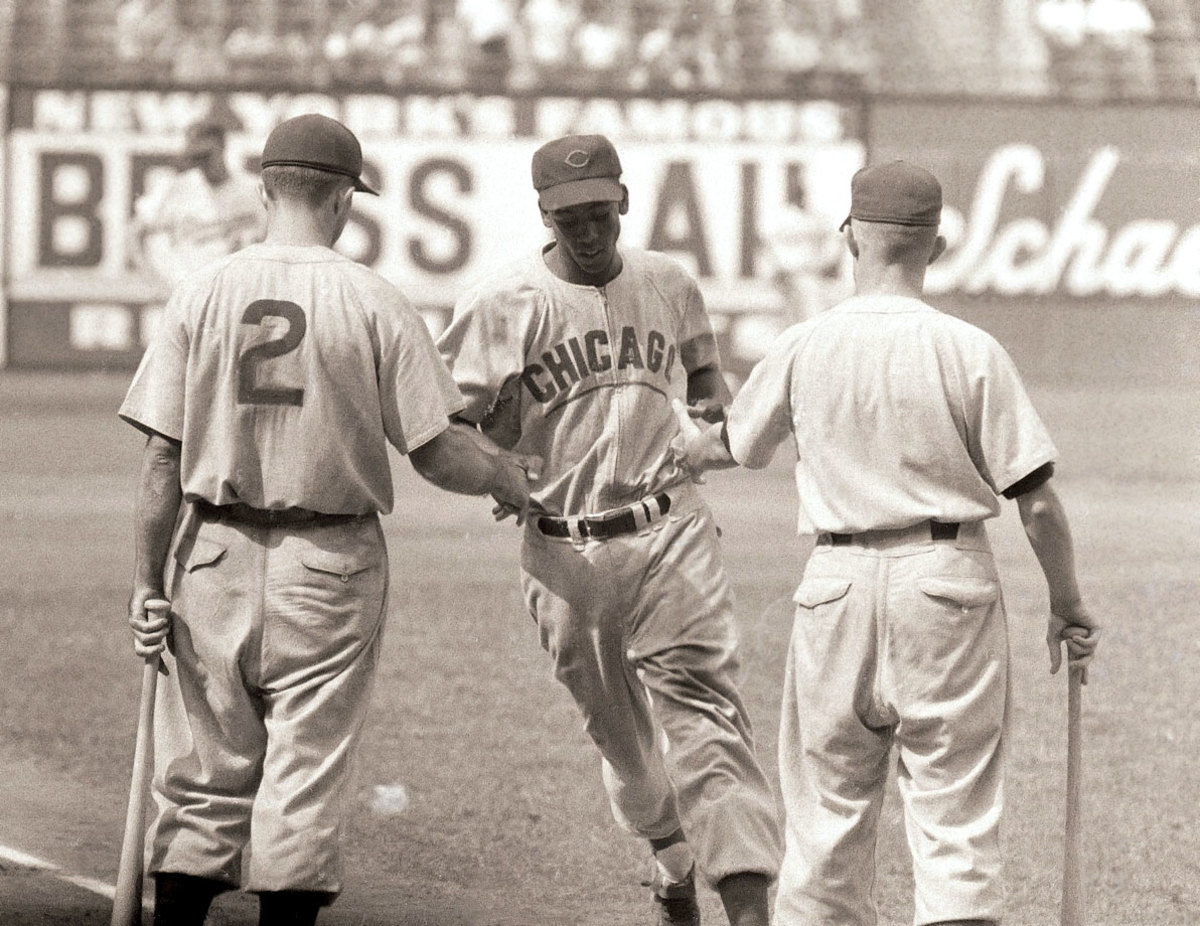
1955
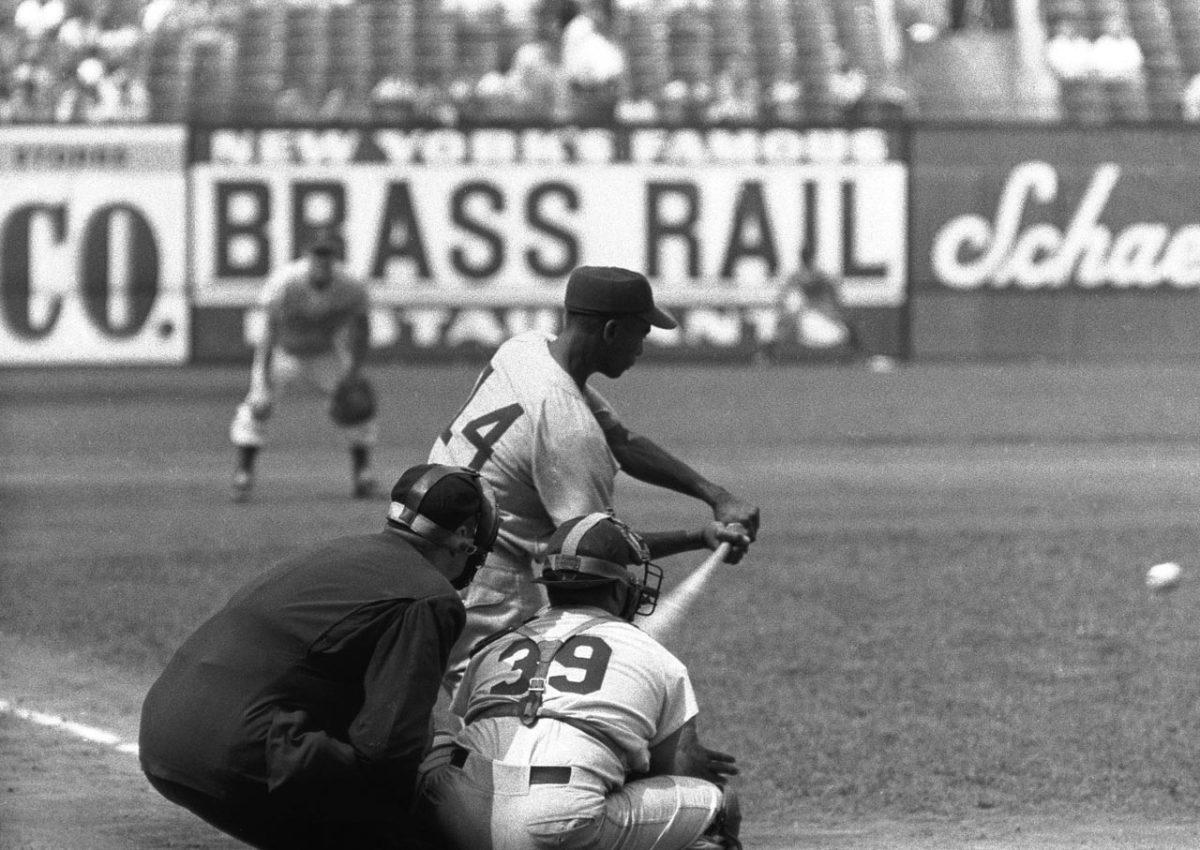
1955
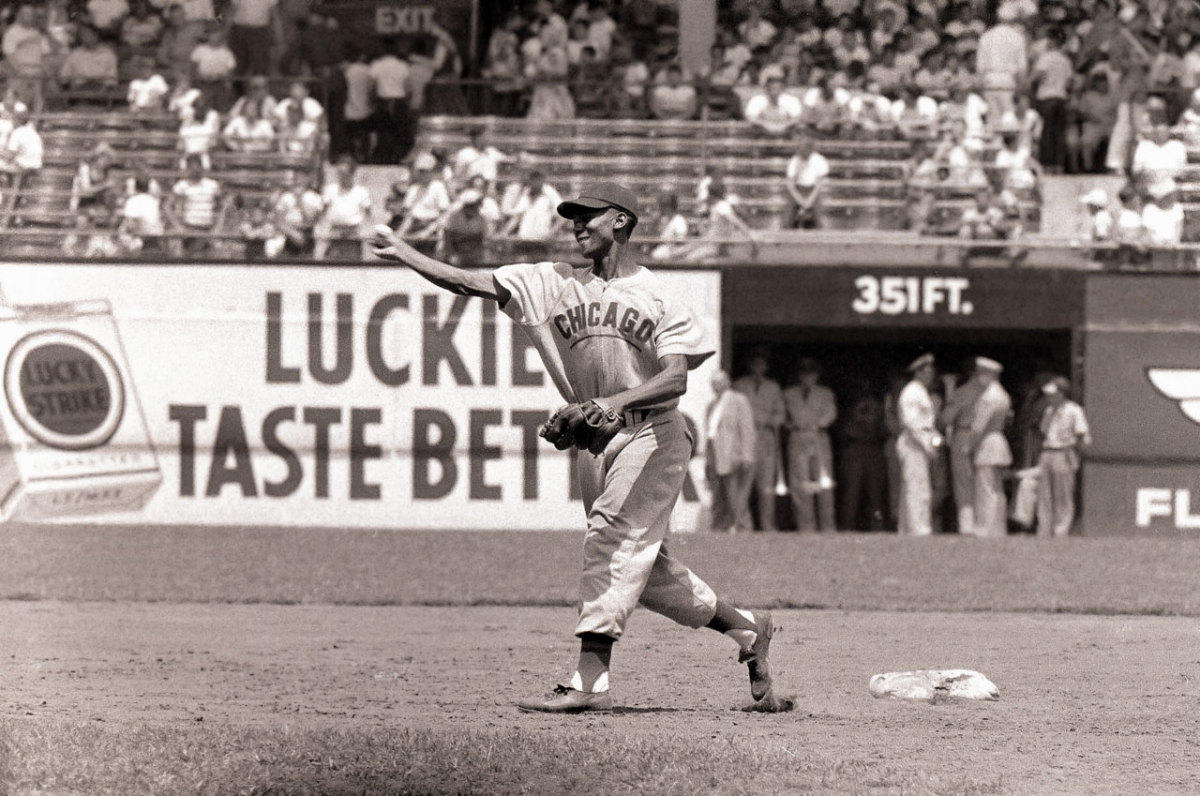
1955
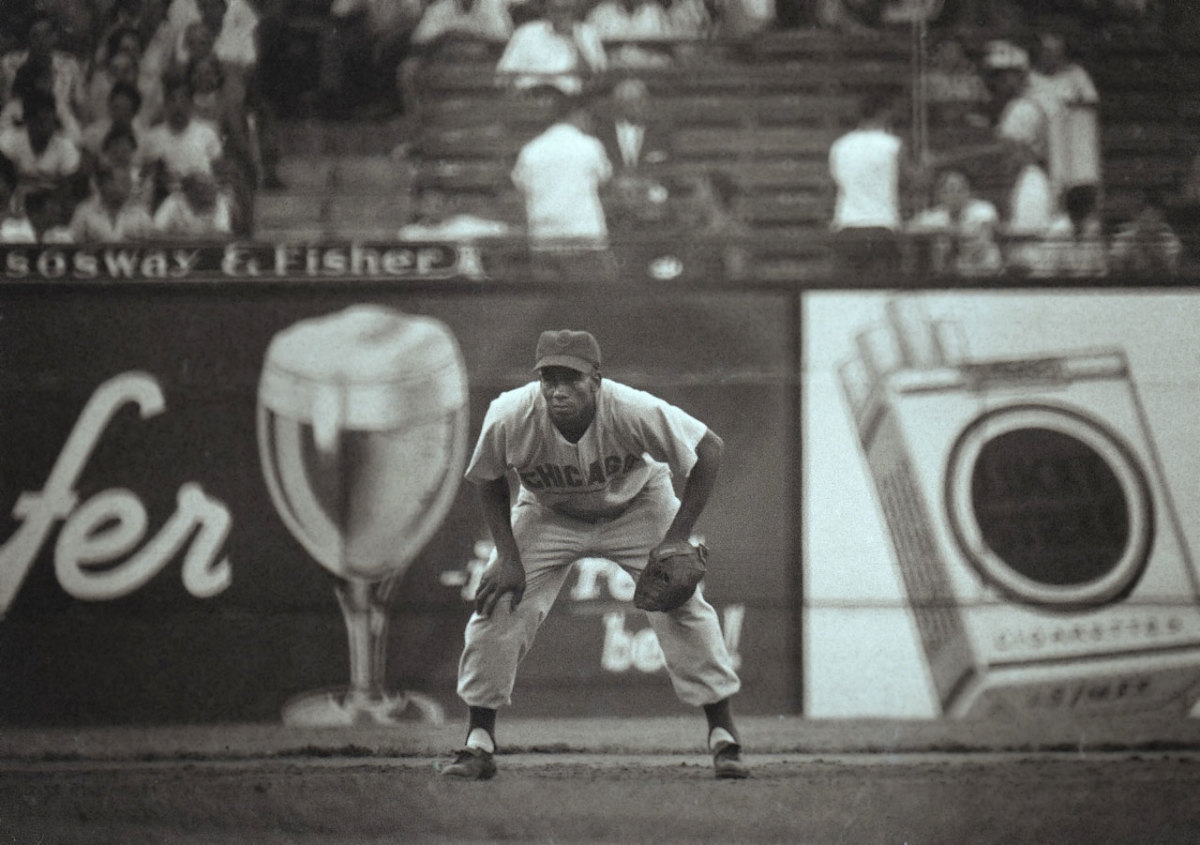
1956
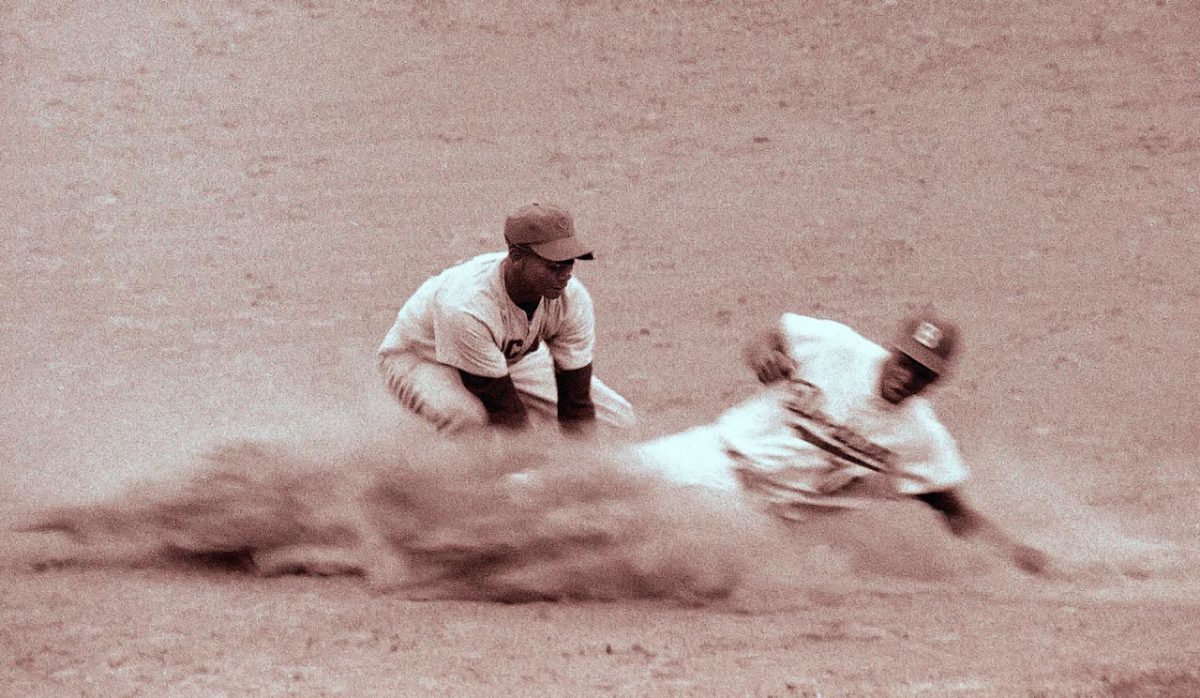
Ernie Banks makes the tag on Jim Gilliam of the Brooklyn Dodgers.
1962
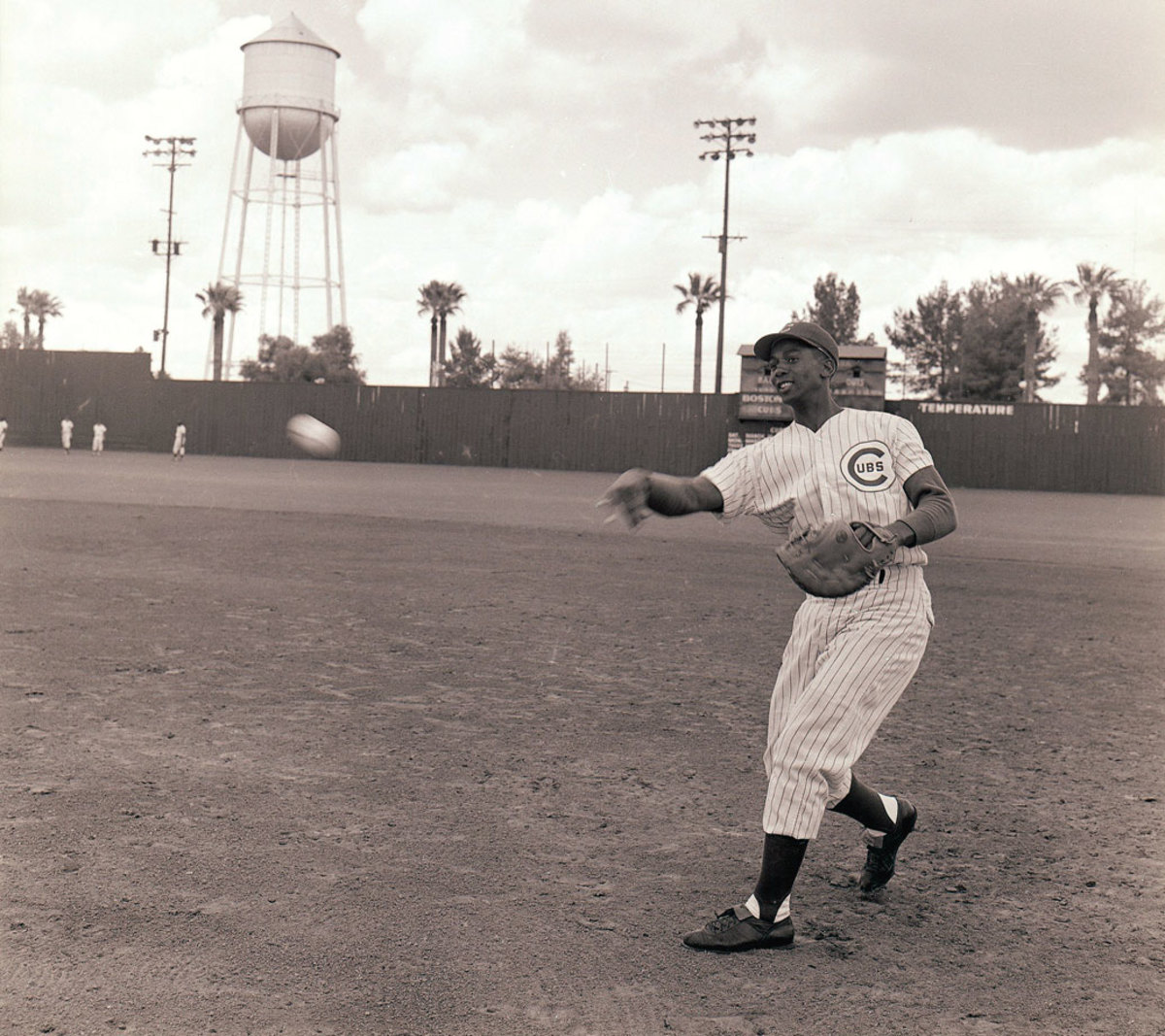
1962
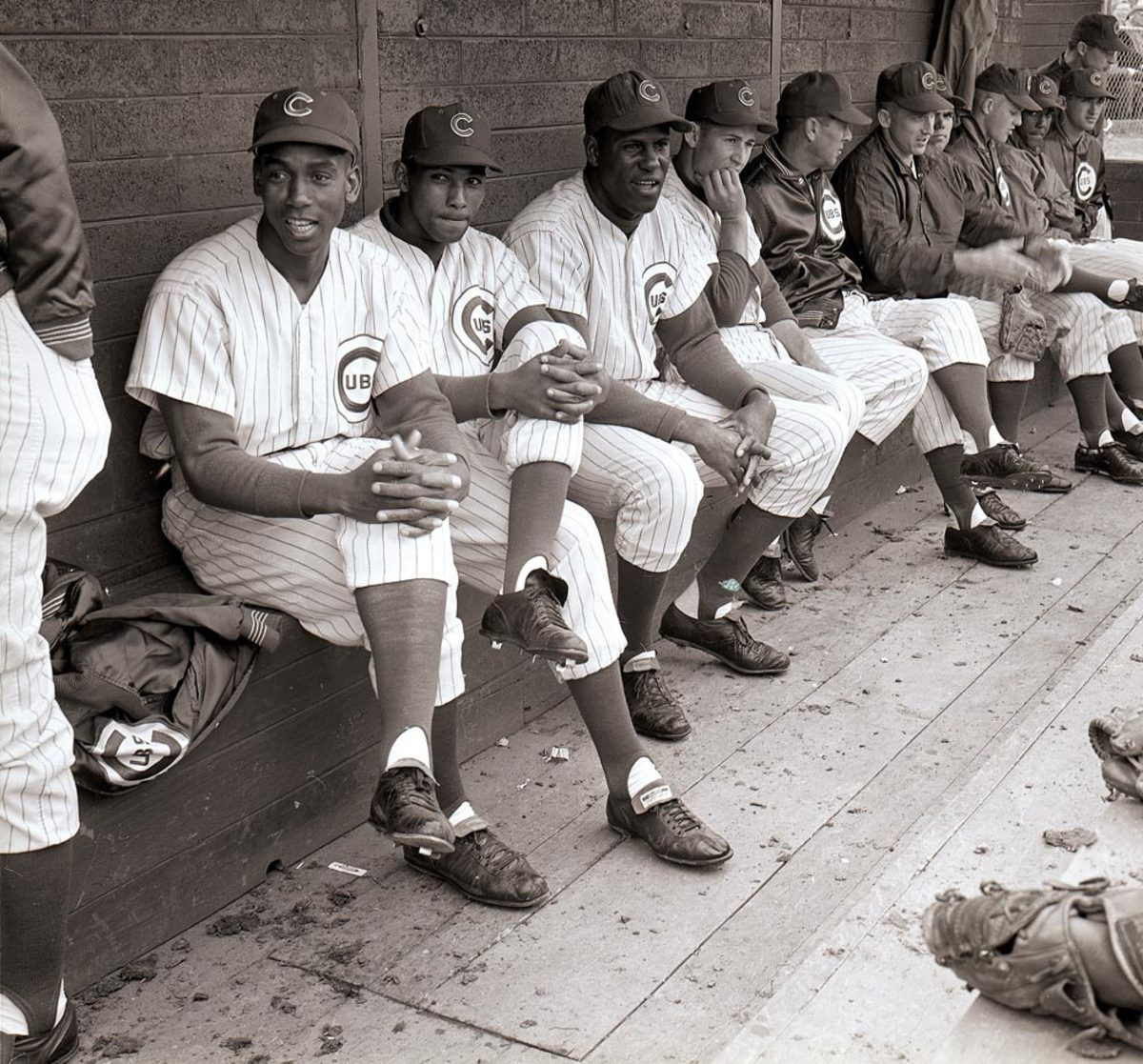
Ernie Banks sits with Billy Williams, George Altman and Ron Santo in the dugout.
1964
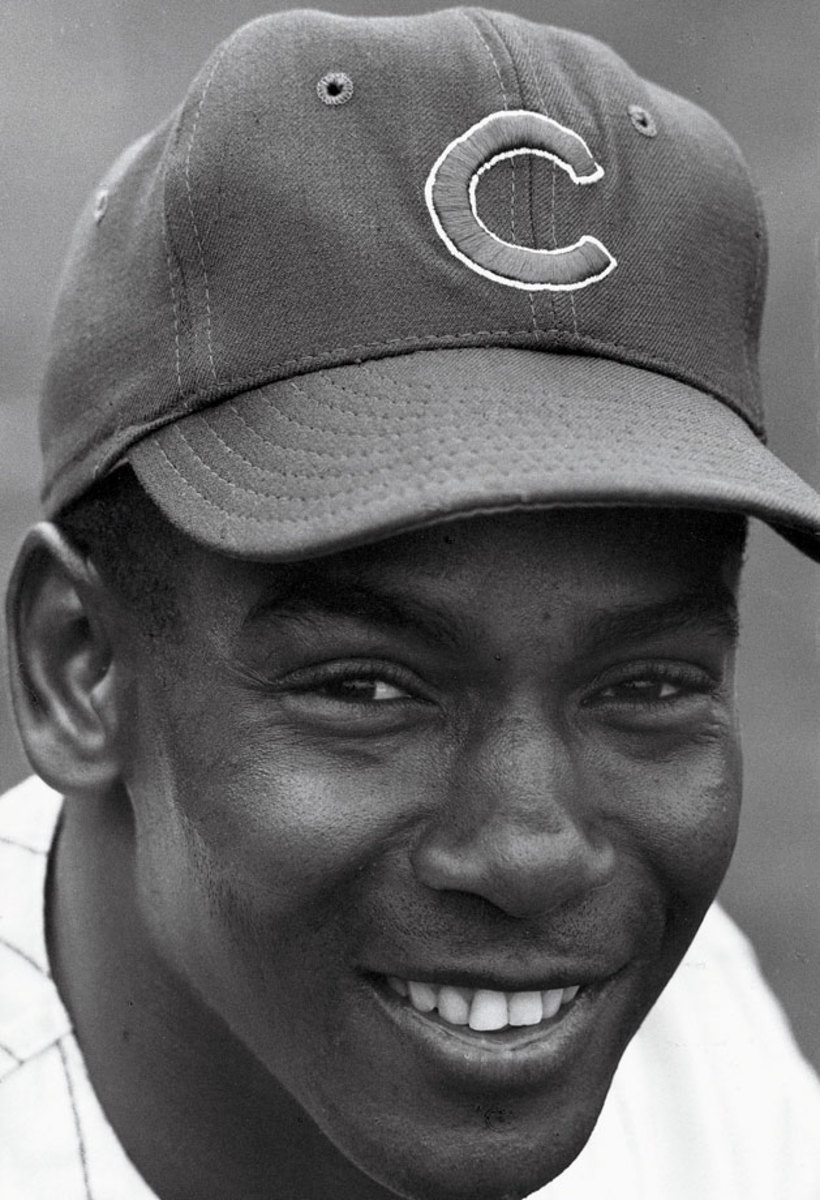
1969
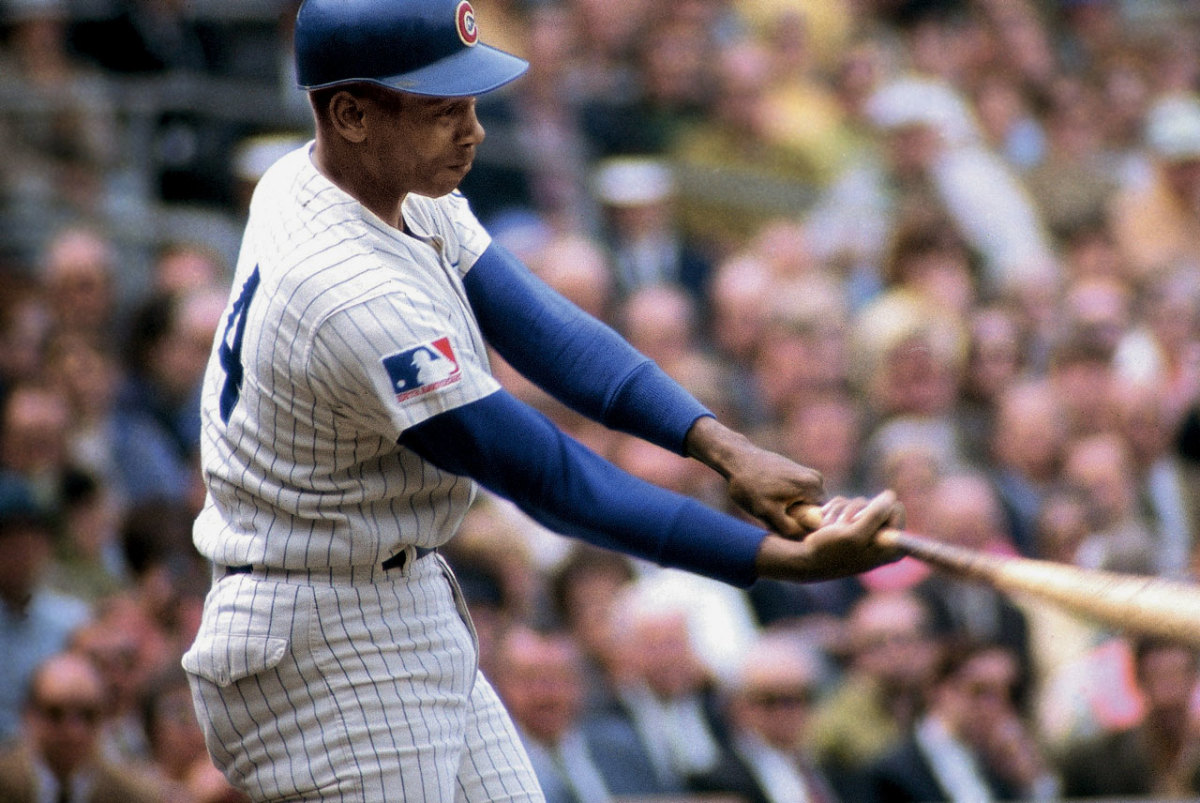
1969
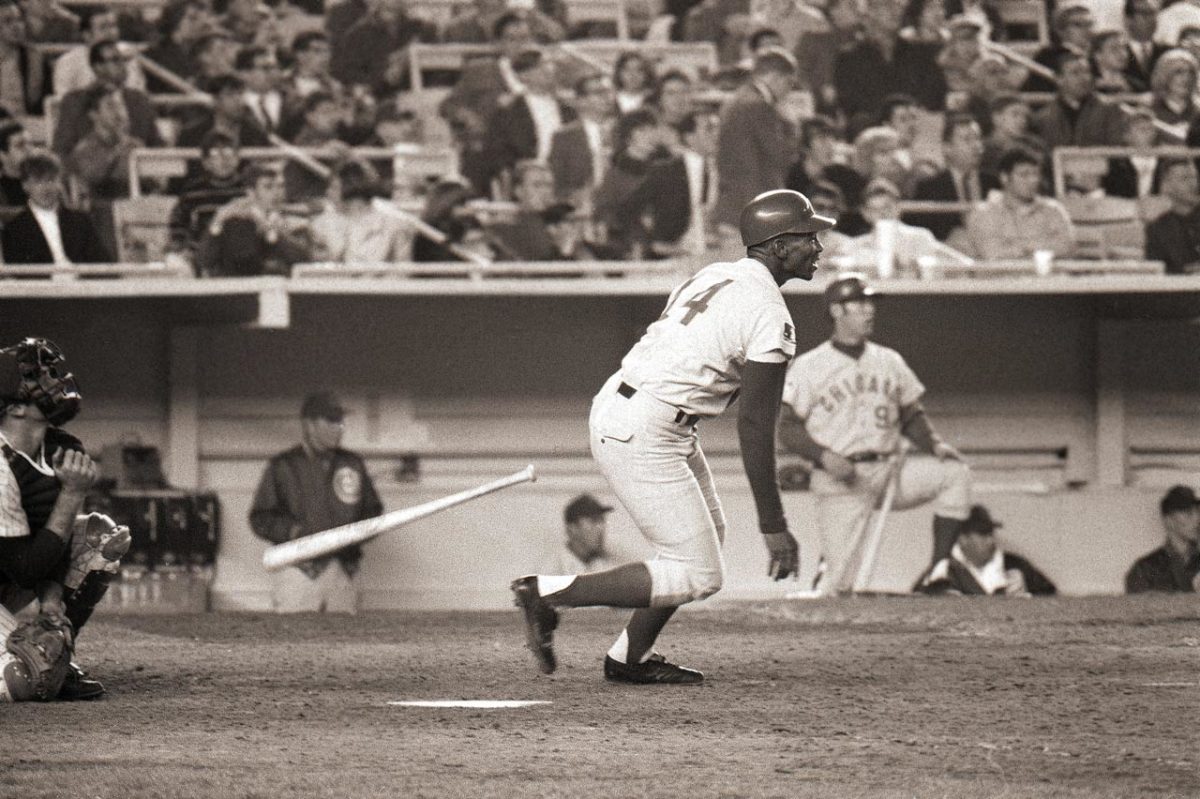
1969
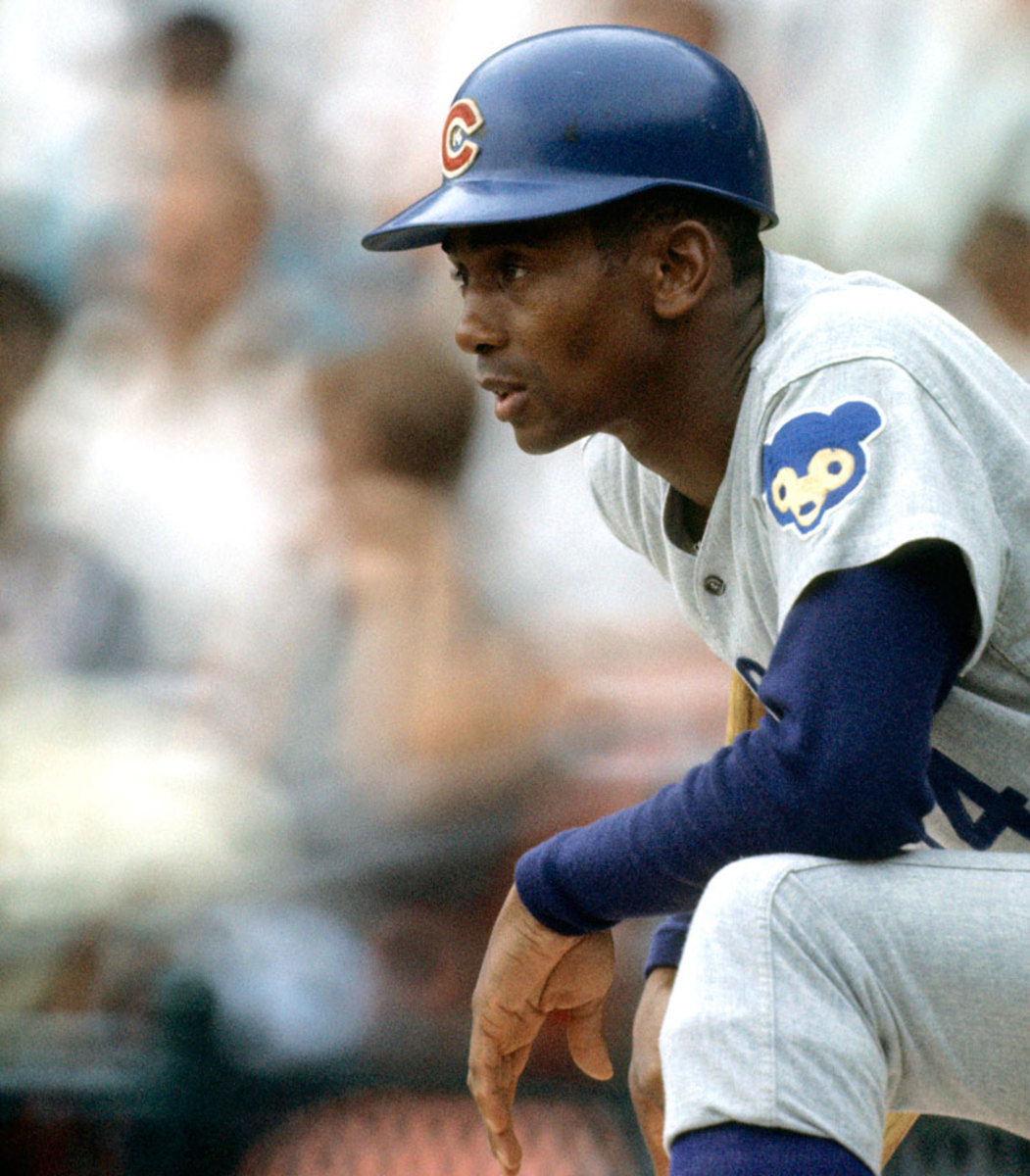
1969
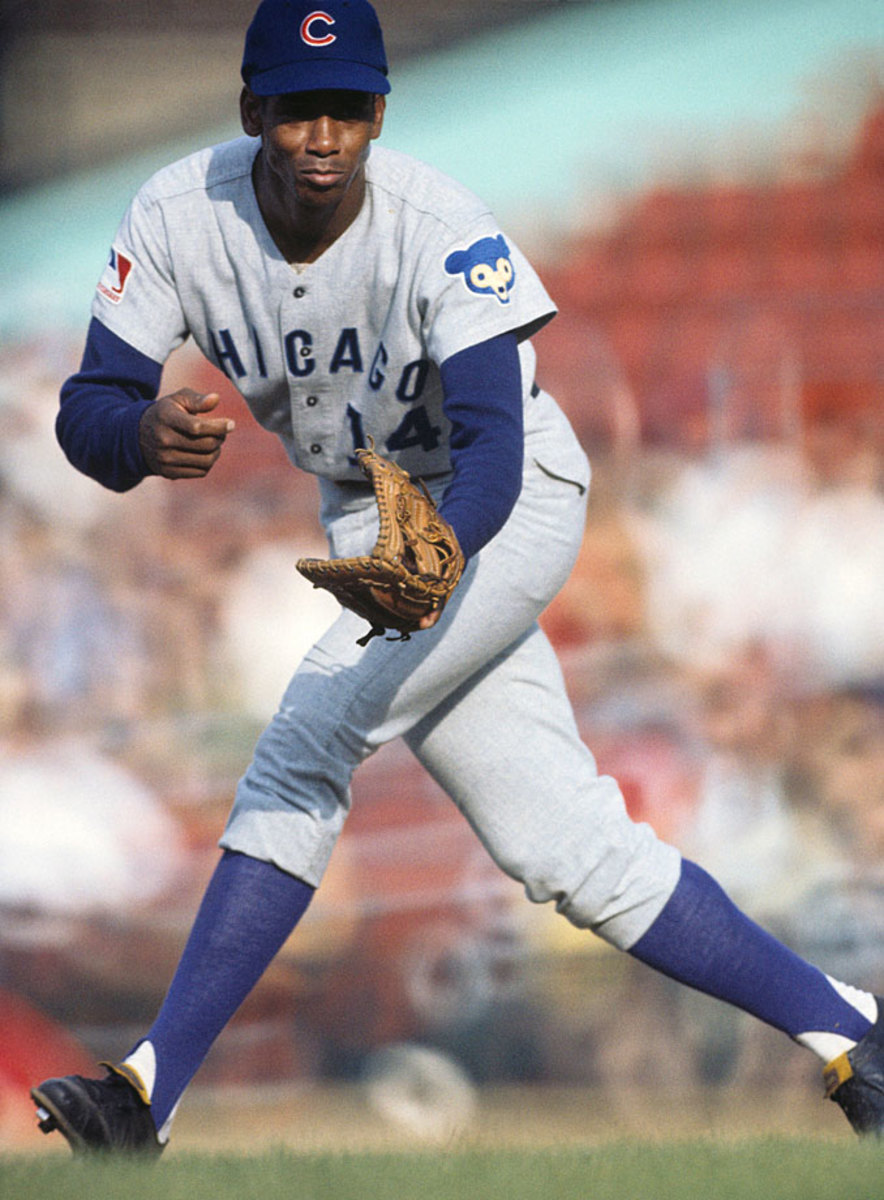
1969
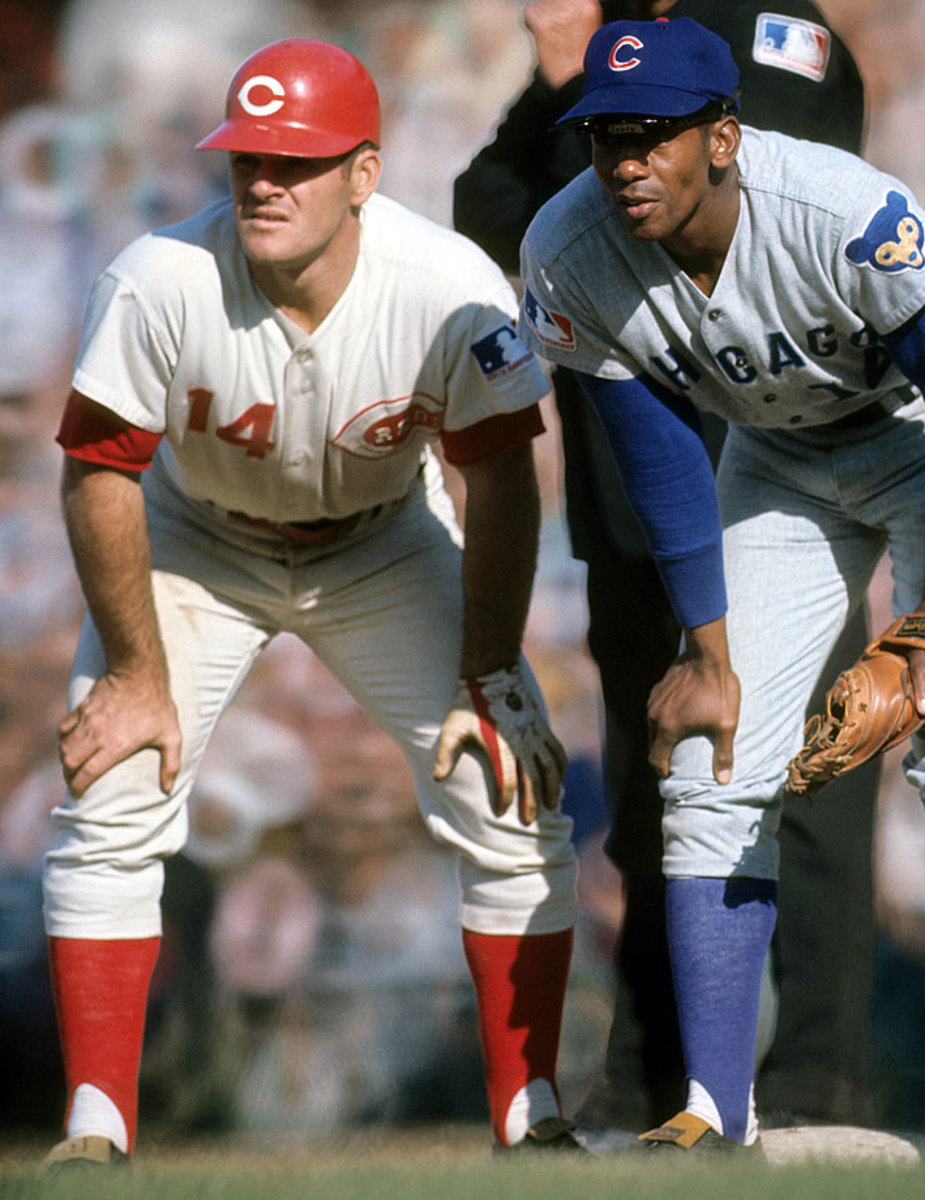
Ernie Banks and Pete Rose on first base.
1969
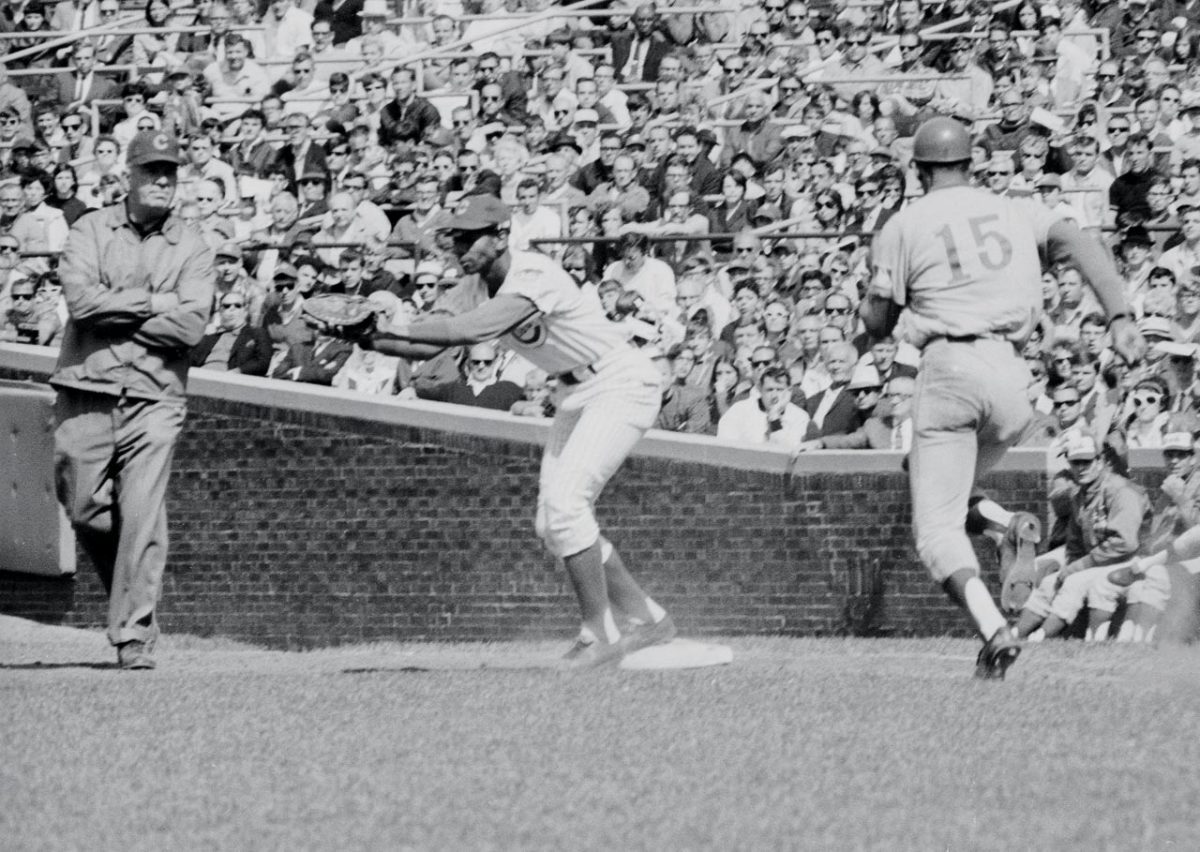
Ernie Banks catches a throw to first for an out on Manny Mota.
1969
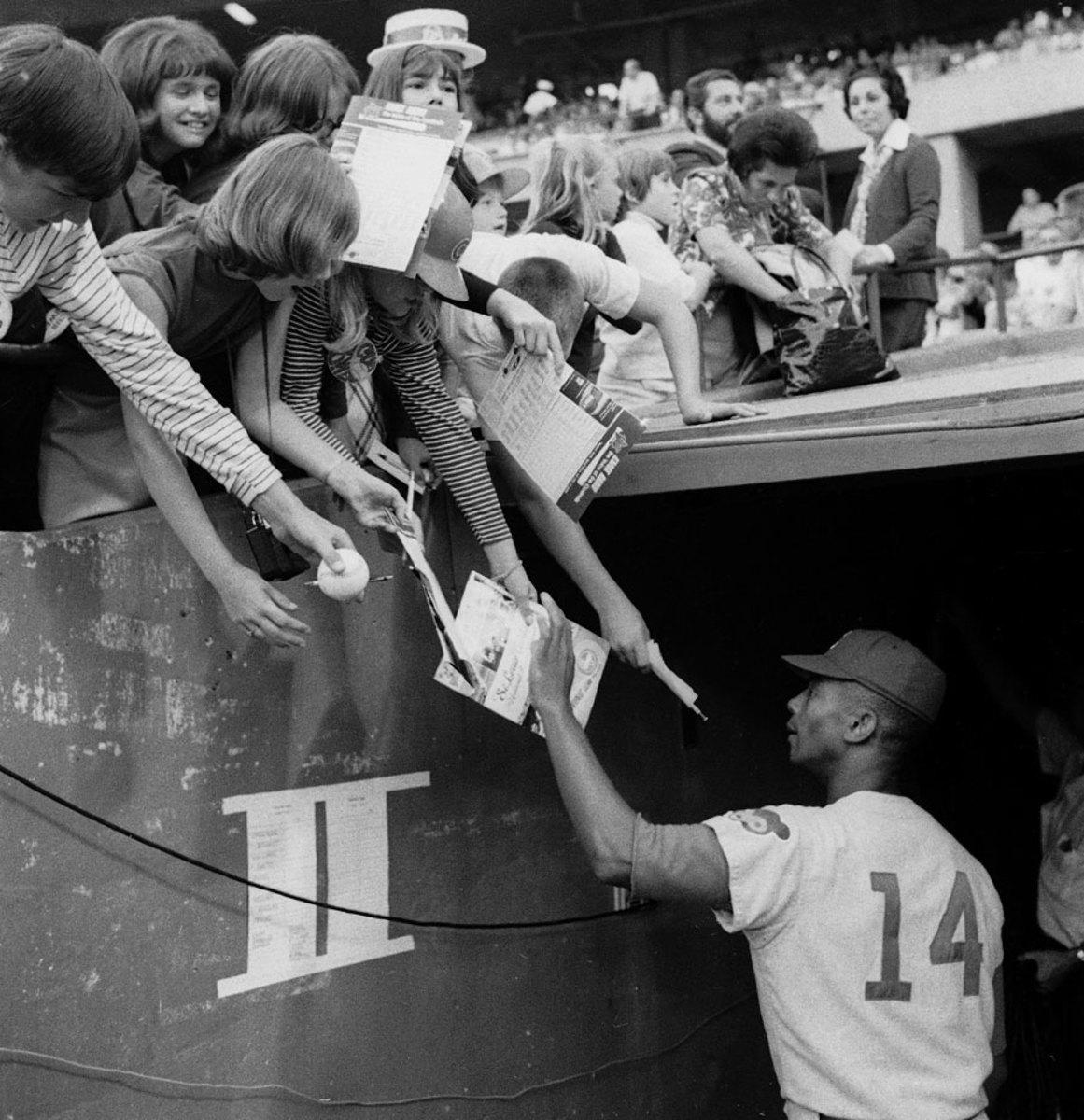
1970
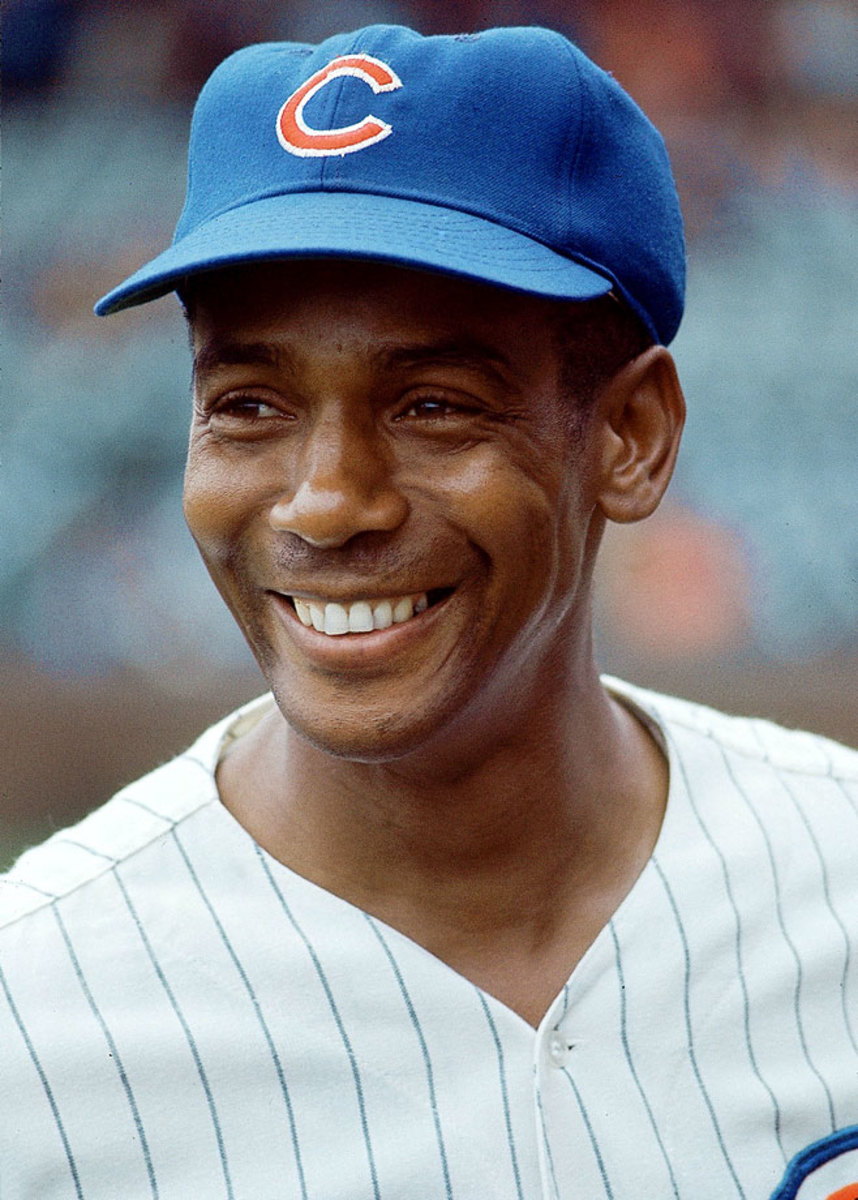
1995
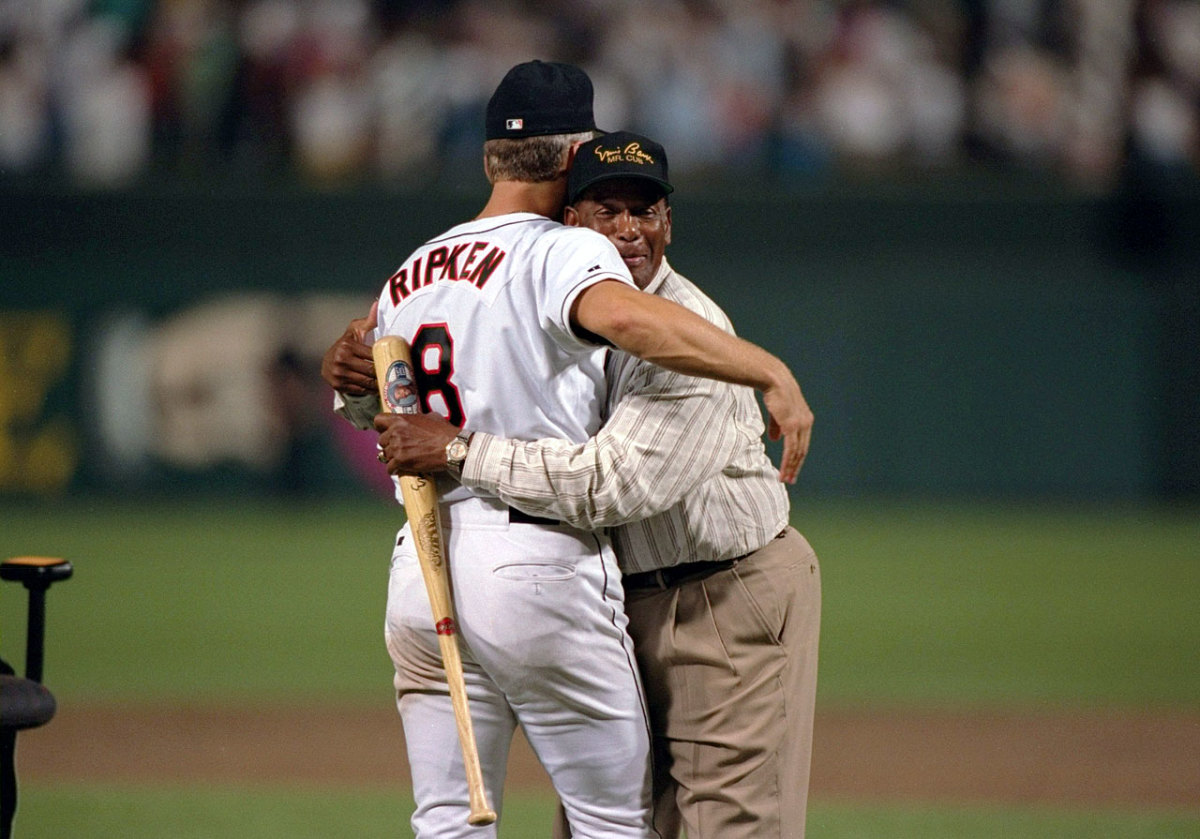
Ernie Banks hugs Cal Ripken Jr. after Ripken tied Lou Gehrig's record of 2,130 consecutive games played.
1996
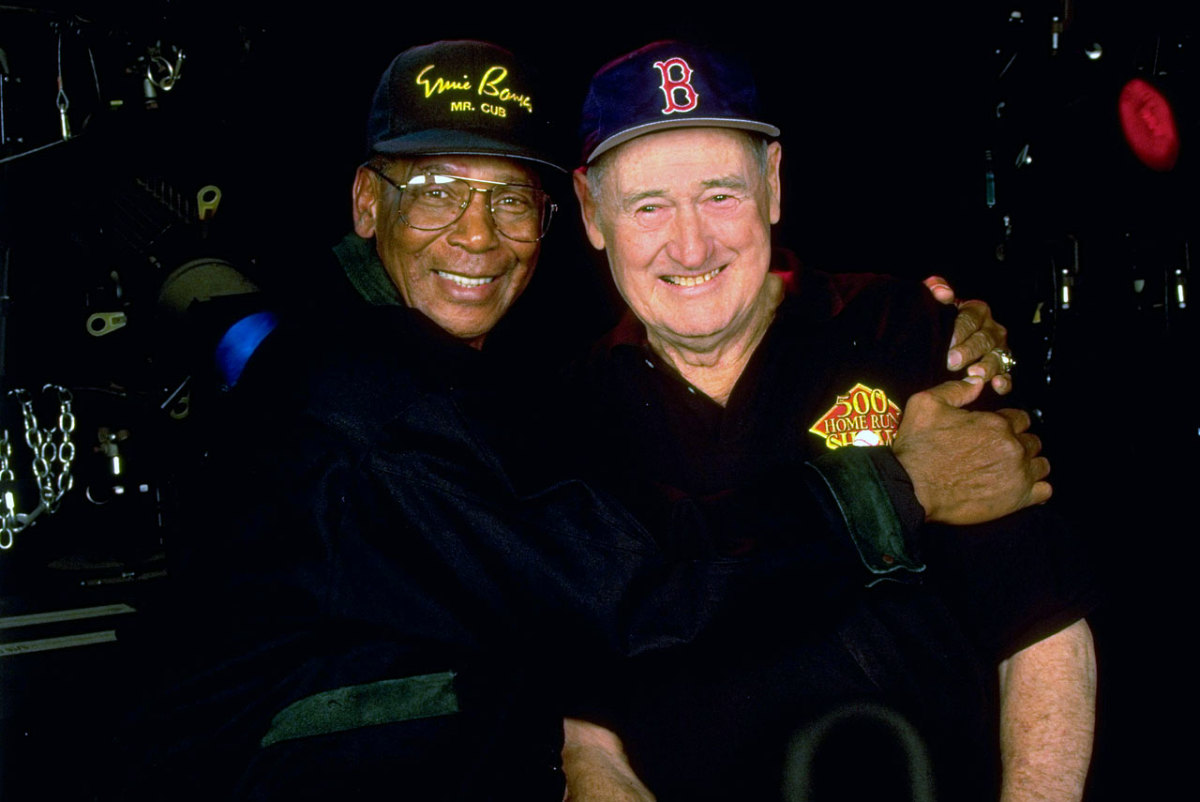
Ernie Banks hugs Ted Williams during the 500-hitters reunion.
1999 All-Star Game
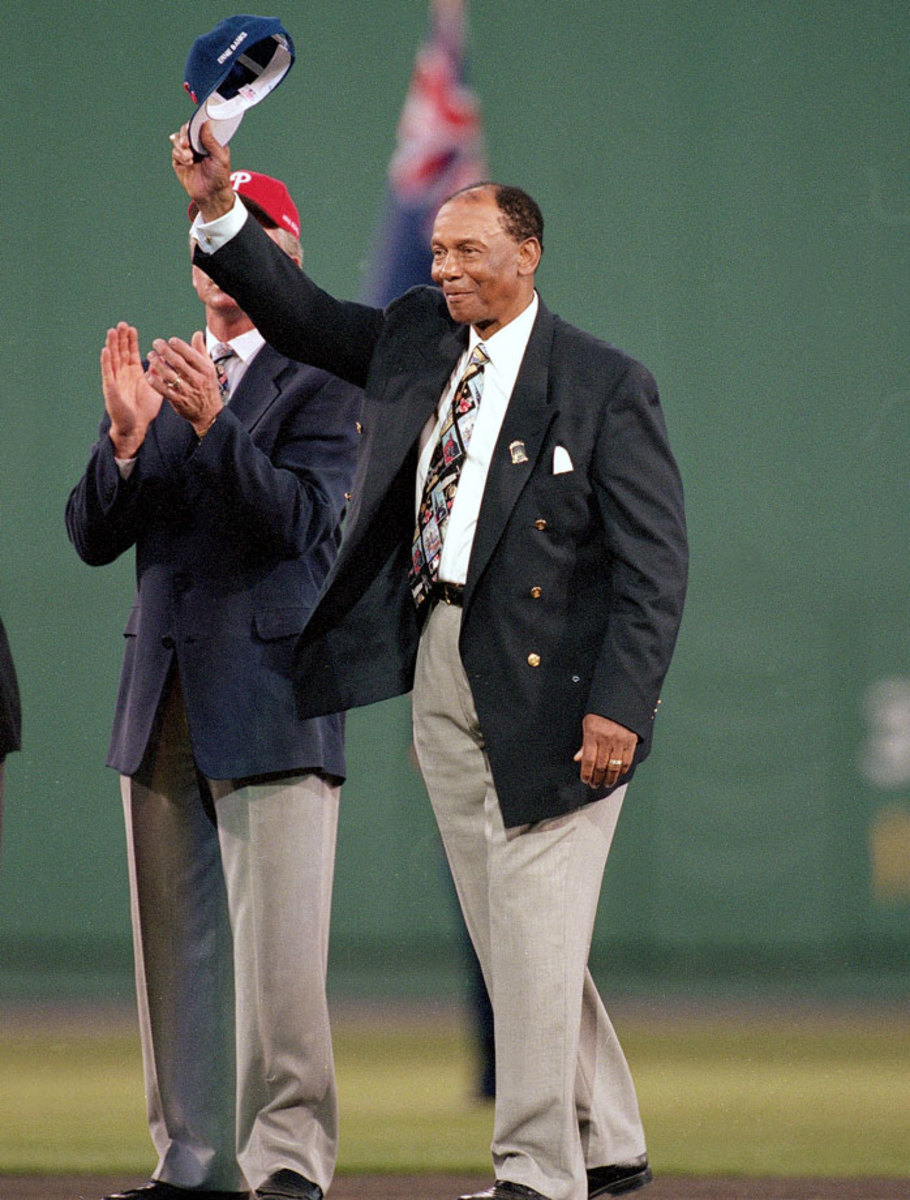
2001
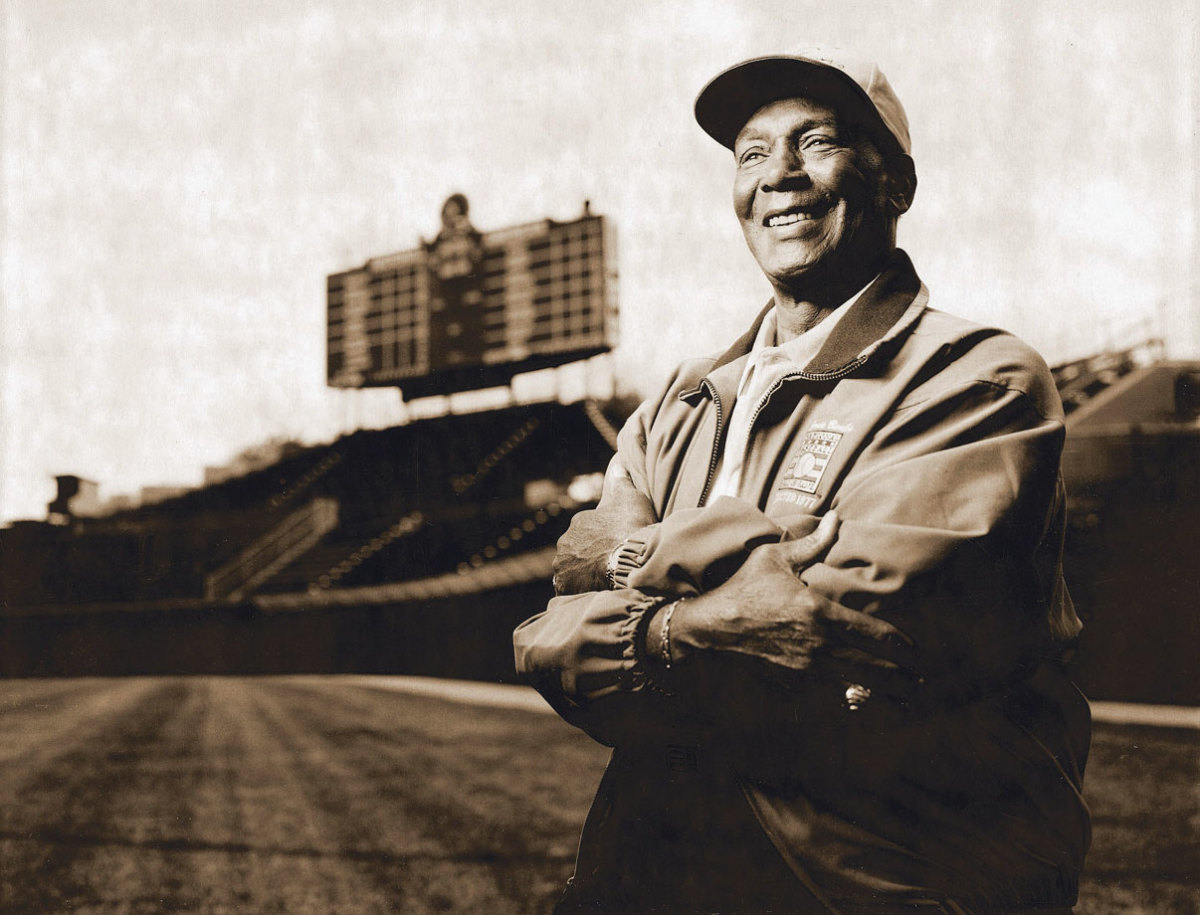
2004
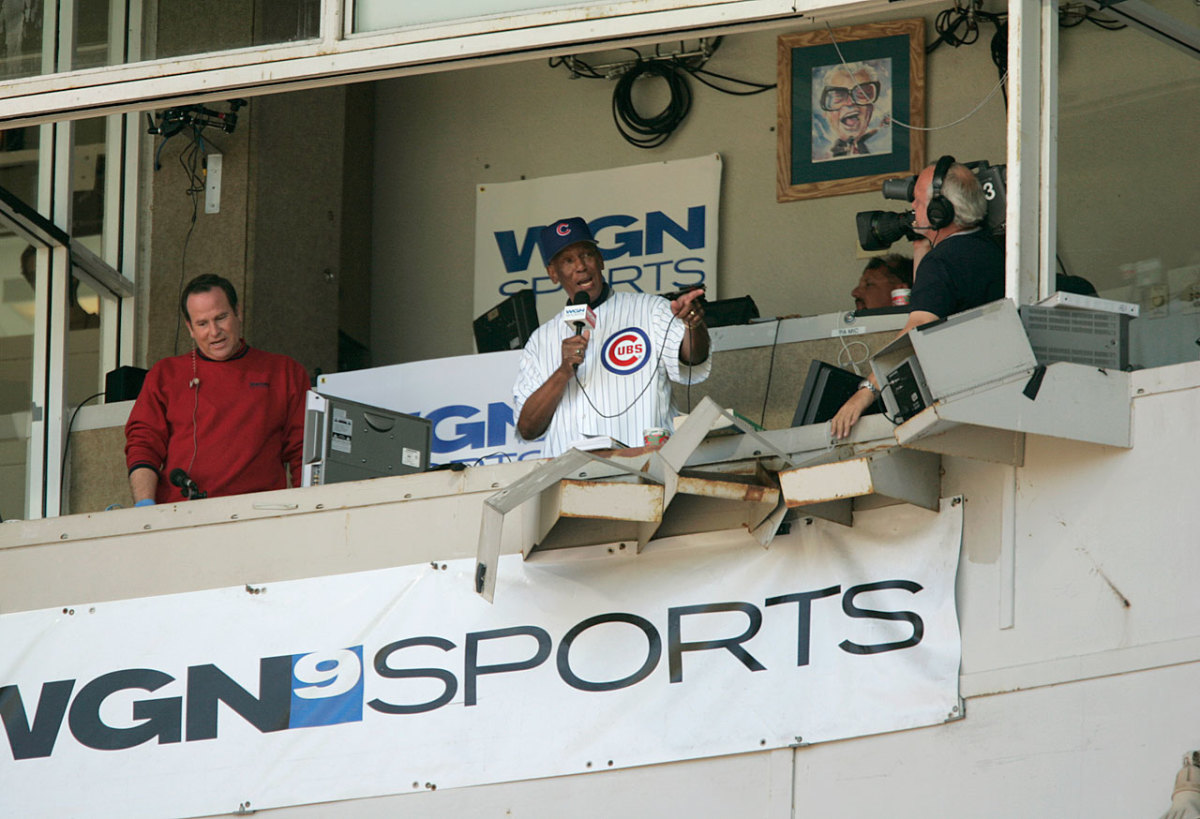
2007 NLDS
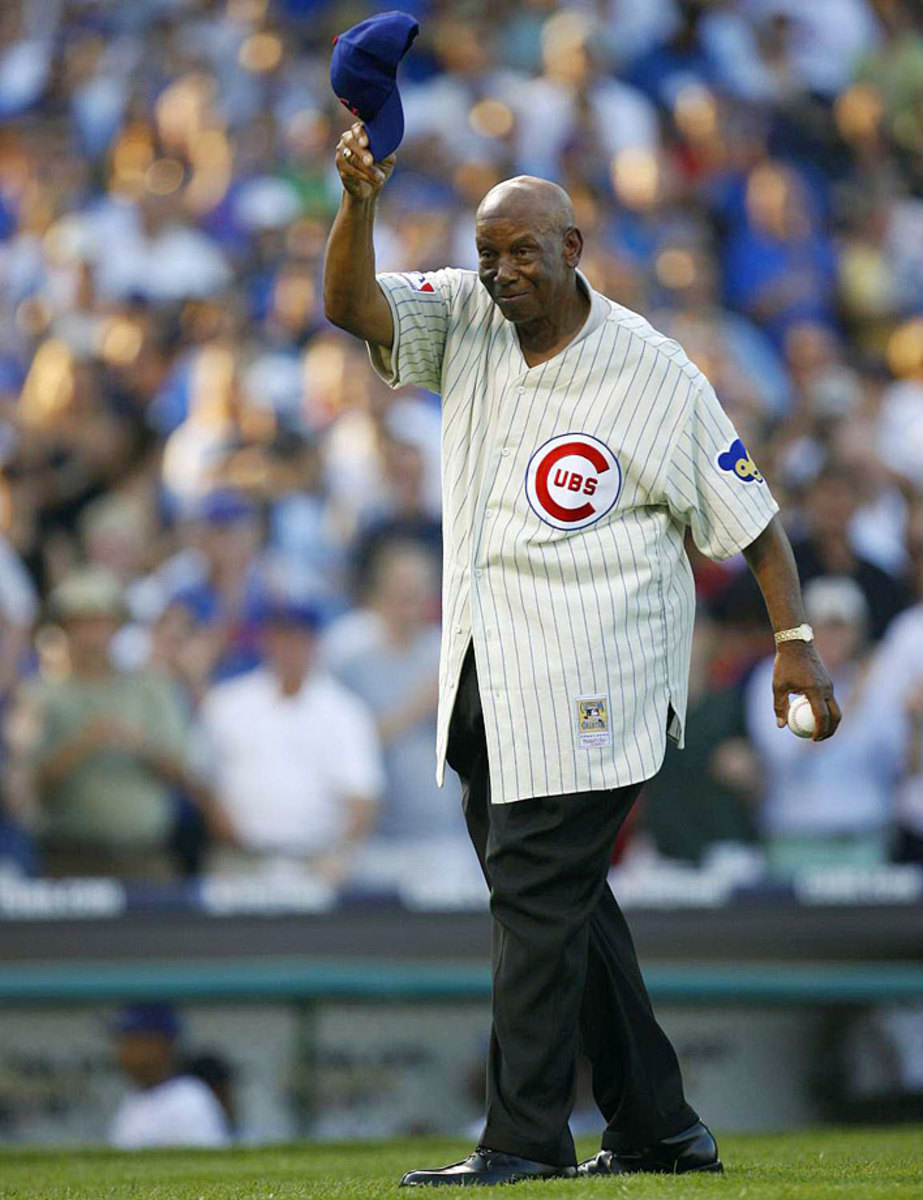
2014
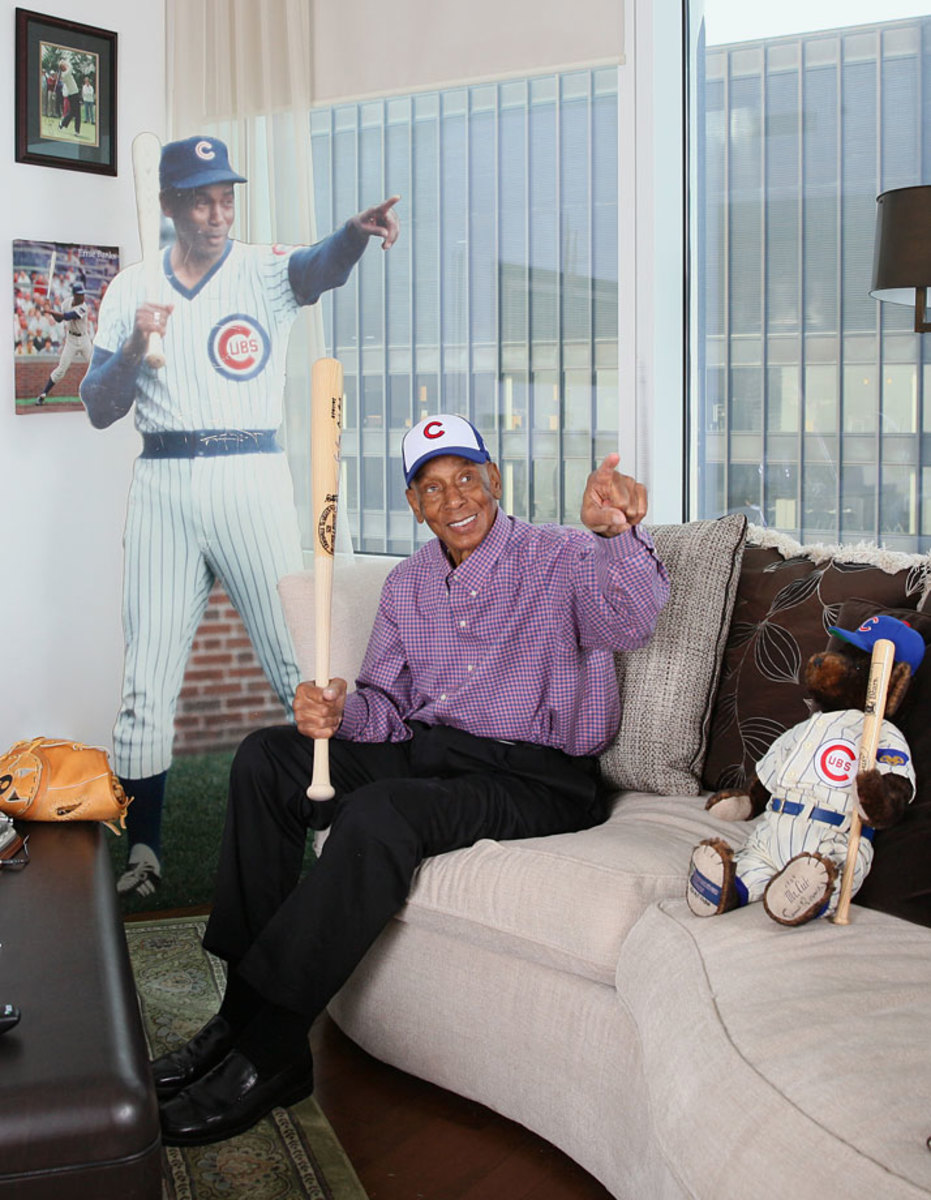
2014
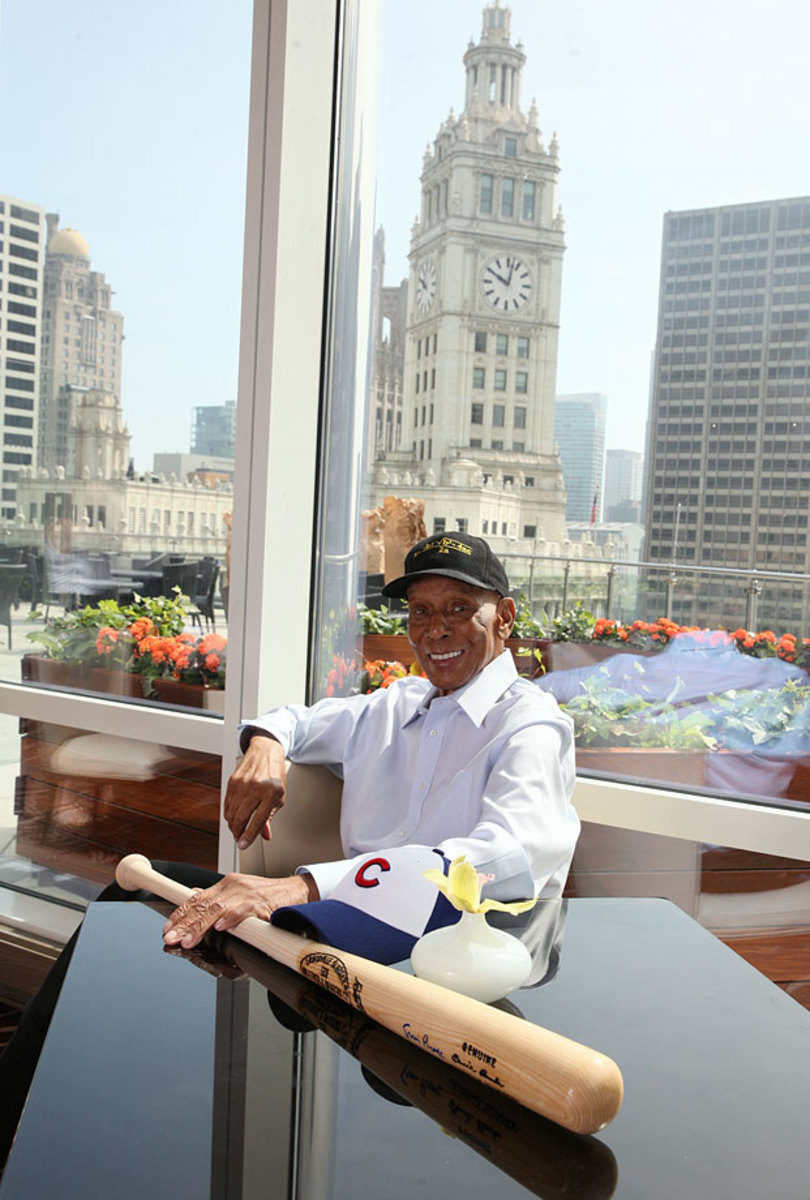
2014
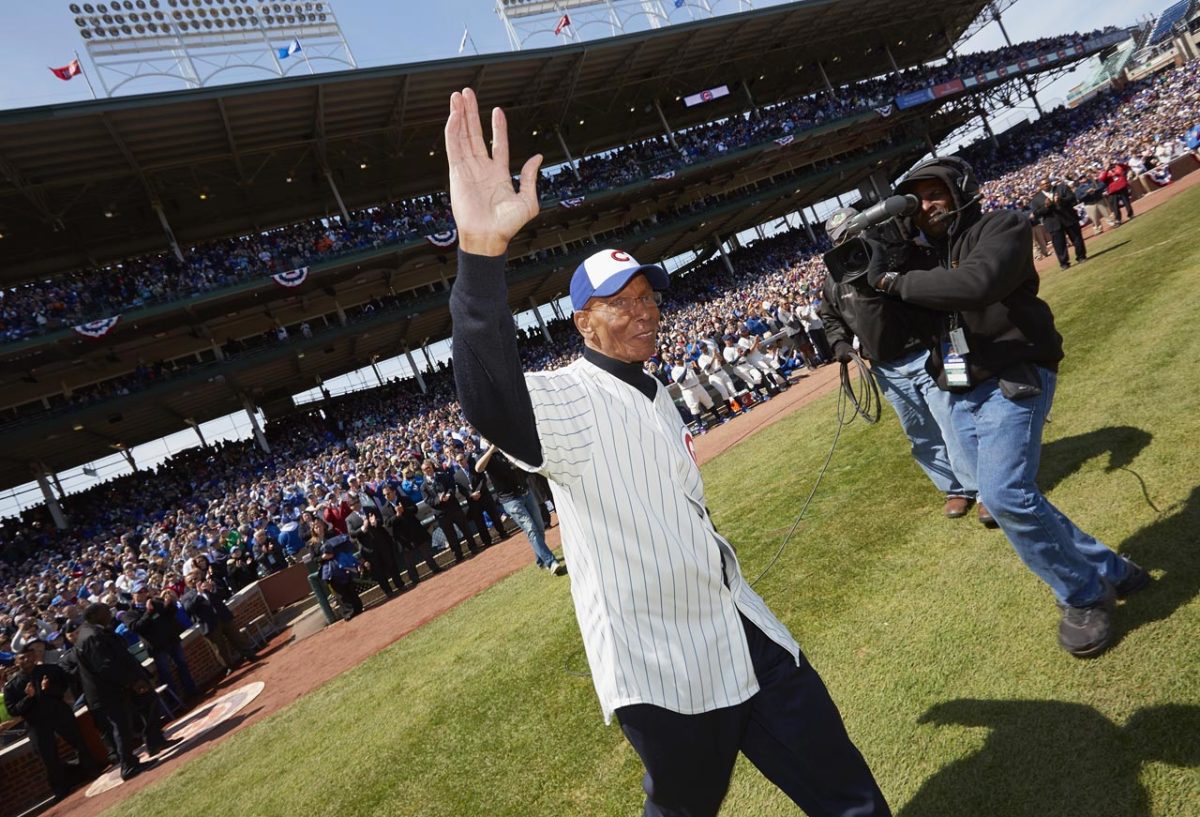
Ernie Banks Statue at Wrigley Field
